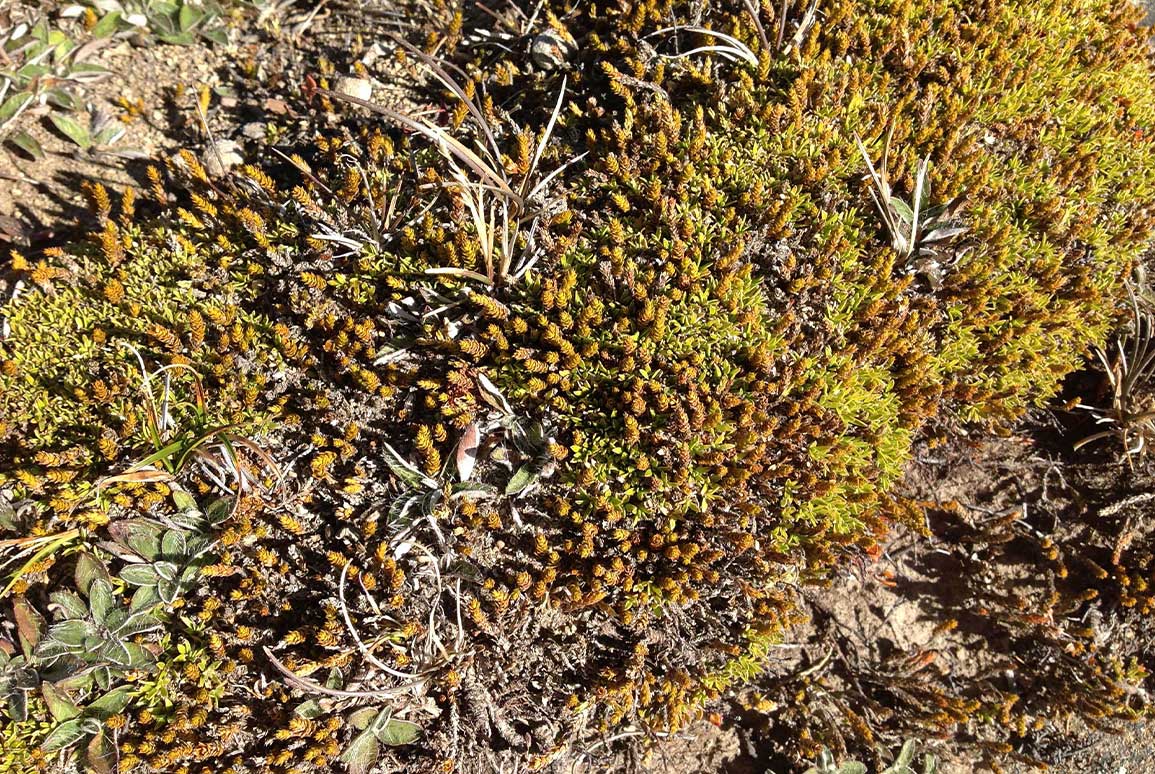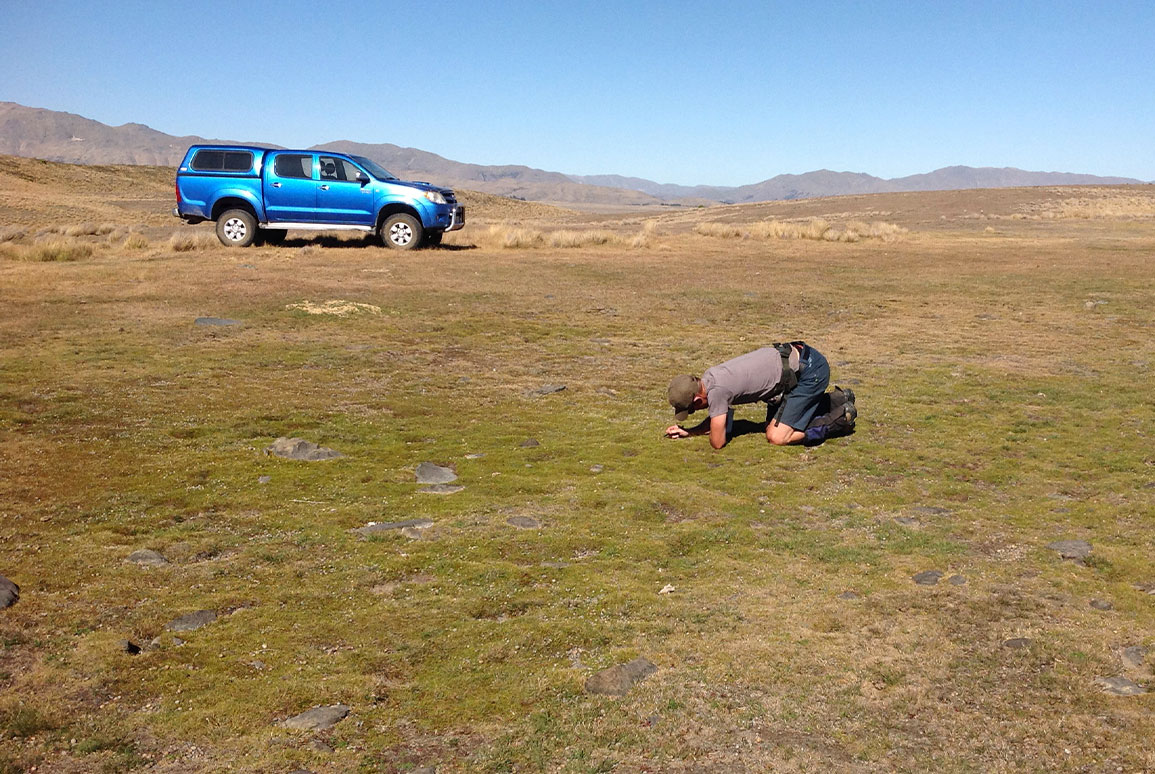Ecologist Scott Hooson has worked on various projects in the MacKenzie Basin. He shares insights from his botanical surveys of the native plant communities on the basin floor.

The MacKenzie Basin, in inland Canterbury, is well known for its iconic landscapes with tawny brown tussock, turquoise glacier lakes, wide-open skies and the ‘backdrop of the snow-covered Southern Alps / KaTiritiri-o-Te-Moana. Its ‘desert-like’ character is a result of the climatic extremes it experiences, from freezing cold winters with frost and snow, to stinking hot summers with low rainfall. What many people may not know is that this landscape supports a huge diversity of unique and incredibly interesting native plants, many of which are very small and hard to spot.
The MacKenzie Basin supports many rare ecosystems including dry tussock grasslands, inland dunes, braided rivers and glacial landforms such as inland outwash gravels, moraines and ephemeral wetlands (also known as kettleholes - pictured). These ecosystems support a very diverse range of native plants including a large number of nationally Threatened and At Risk plant species. At least 81 Threatened and At Risk native plant species have been recorded from habitats on the floor of the MacKenzie Basin, including several species that are found nowhere else.

Many of the plants that grow in these ecosystems have adaptions to cope with the climatic extremes, and the high levels of environmental stress they experience. These adaptations include high levels of dormancy, seasonality in growth (such as spring annual lifecycles), short stature, leaflessness and compact cushion and mat growth forms.
Surveying these vegetation communities can be challenging. Because many species are small and cryptic, they are easily missed and can be difficult to identify, particularly if they are not flowering or fruiting. To identify some of these plants, I spend hours on my hands and knees using a small hand lens to see the tiny flowers and other parts of a plant. Other adaptations such as dormancy and spring annual lifecycles mean that if surveys are not timed for the right season, some plants, including Threatened and At Risk species, may not even be visible.
Despite some of the challenges of surveying the native plants in the MacKenzie Basin, there are some real botanical treasures to be found, particularly if you don’t mind crawling around on the ground to have a good hard look!

